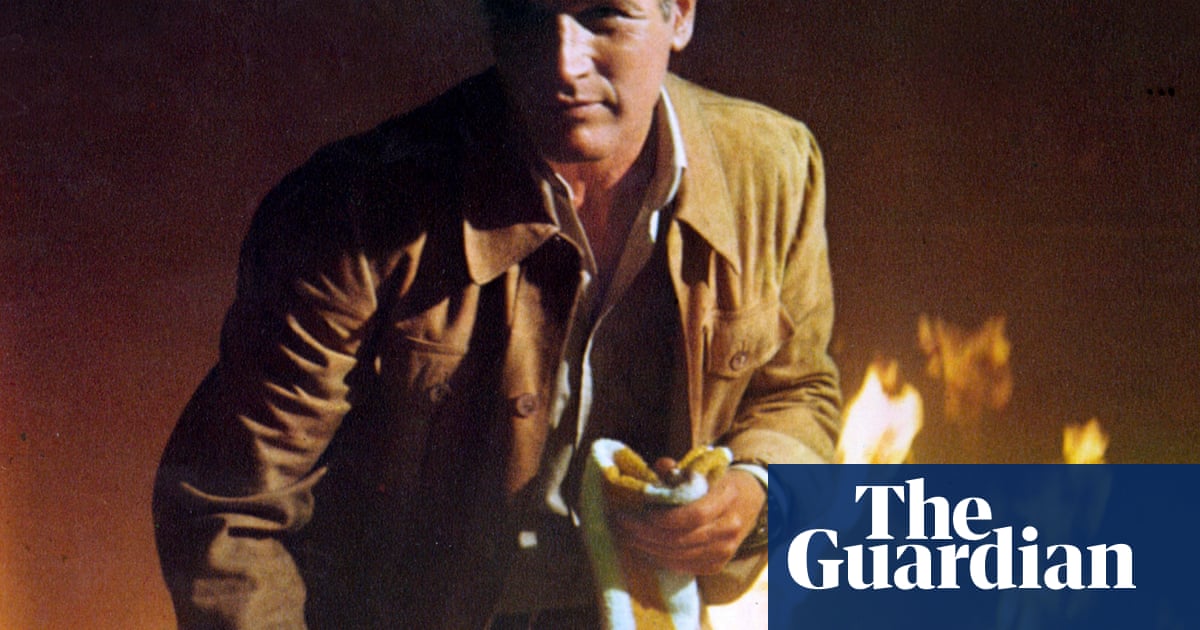Among the many reasons I’m long overdue for therapy would be that I consider a feature about a bunch of people trapped in a burning skyscraper as afeelgood movie. But there it is: the stunning effects (which hold up to this day), the sprawling, larger-than-life cast and accompanying who-will-make-it-to-the-end? suspense, the earnest, cheeseball dialogue – whenever I feel anxious or down, something about The Towering Inferno offers solace.
The most obvious reason boils down to one thing: nostalgia. My parents werefilmenthusiasts who would usually take us to a movie every week. And this was no ordinary experience: The Towering Inferno was the crown jewel in the 1970s disaster cycle, disdained by many critics for being trashy (while acknowledging it was entertaining trash). It was the talk of the schoolyard: whose parents were cool enough to actually take their kids to see this big-screen spectacle? Thus it was one of my primal filmgoing experiences: it accompanies fond memories of my parents treating us to something that felt as exhilarating as the circus.
As I began film studies at university, the case for The Towering Inferno only became stronger: a genre analysis of the film suggested people were lining up to see it (it was the box office champ of ’74) because it reminded them of America itself, enduring the horrors ofVietnam, Watergate, racial strife and a flurry of political assassinations. Disaster movie casts were so full of familiar faces that everyone could find someone to identify with.
But as I continued to revisit the film – and all of the 70s disaster movies – it was clear they were also about old-school Hollywood grappling with the reality of the New Hollywood. Young directors were breaking the rules, independent production was expanding, the Hays code had expired and the studio system would never be the same. Stars of yesteryear such as Fred Astaire, Jennifer Jones and (notoriously conservative) William Holden held court with the new iconoclastic superstars likeSteve McQueen, Paul Newman (who had made Nixon’s enemies list and declared it his proudest achievement) and Faye Dunaway (who, seven years earlier, had starred in Bonnie and Clyde, considered the breakout moment for the New Hollywood period).
Each star inhabited their own mini-melodrama: would the ambitious journalist (Dunaway) leave her career to be with her lover? (He was played by Newman; did we have to ask?) Will the con artist (Astaire) reveal to his new crush (Jones) that his initial plan was to trick her into a scam? And really, is anyone actually safe whenOJ Simpsonis head of security? There were so many stars in this – hell, even one of the Brady Bunch (Mike Lookinland) is here as the obligatory precocious child – it was like watching Hollywood Squares goes to hell.
Not only were the actors forced to endure a lot of fiery heat during filming, they also had to utter some mind-numbingly rotten dialogue. When the secretary (Susan Flannery) having a secret affair with the building’s publicist (Robert Wagner) realizes they are probably going to get burned alive, she says: “Well, I always did want to die in bed.” How did anyone survive this screenplay? These lines were undoubtedly always groaners, but they’ve fermented into high-level camp.
The meaning of each of those actors was something I encountered in further adventures in film studies. In his landmark 1979 book Stars, British author Richard Dyer analyzes the ideological meanings of various Hollywood luminaries. When I spoke to him about developing his ideas for the book, Dyer confirmed that The Towering Inferno – with its complex, contradictory gaggle of stars of various levels of fame and clashing symbolic meanings – was part of his inspiration.
If The Towering Inferno boiled over with old-versus-new tension, the people making it were clearly in the old-school camp. The film reminded us that even in uncertain times, American heroics, personified by square-jawed masculine protagonists, were alive and well. Sure, America and Hollywood had their downsides and greedy villains, but ultimately, there would be valiant survivors and people would prevail. Despite deep divisions, bad actors (real and literal) and brutal catastrophes, there are still good people around who will perform good deeds. Even in a deeply divided America, a collective challenge reminded us that we were all in this together – that something will emerge from the ruins of a tortured decade. A dozen years after the Cuban missile crisis, the idea that anyone was left standing by the film’s final crane shot was in itself miraculous.
Come to think of it, it feels like it’s time to watch The Towering Inferno again.
The Towering Inferno is available to buy digitally in the US and rent digitally in the UK
